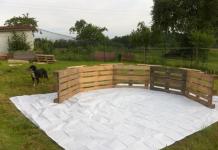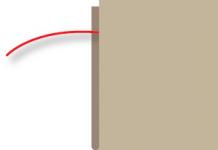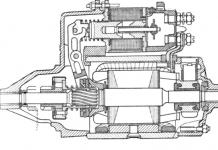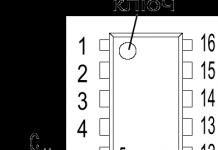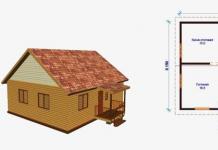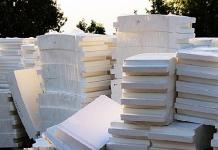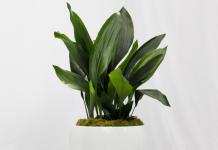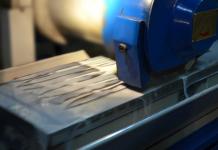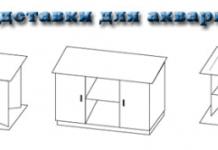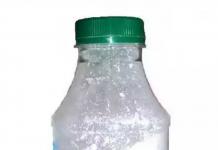To supply water from deep wells and wells, it is recommended to use special borehole and well pumps, but self-priming surface pumps with an external ejector and pumping stations based on these pumps can be used for these purposes. Pumps of this type are represented in our product range. You can get information about pumping stations on the page.
The company "SUBLINE SERVICE" offers self-priming surface pumps with an external ejector of the UNIPUMP and SEA-LAND series.
Get technical information about our pumps of a specific series, which will help you choose and buy necessary equipment You can follow the link to the corresponding page.
Pumps with external ejector
The SUBLINE SERVICE company offers surface pumps for water supply with an external ejector. This group of pumps is represented by the DP series (UNIPUMP trademark) and the JAP series (SEA-LAND trademark). Their design feature- the presence of an external unit (external ejector), which is immersed in a reservoir, from which the pump supplies water.
The scope of pumps of this group largely coincides with the scope of pumps with an internal ejector, however, pumps with an external ejector allow water to be sucked in from a depth of more than 8 meters.
Attention!
Before installing the pump, check that all pipes (metal, plastic) are clean to avoid clogging the external ejector. A non-return valve must be installed at the outlet of the external ejector. After installing the pump, you need to fill the pipes and the pump clean water. For effective use external ejector, it is recommended to install a hydraulic accumulator in the system.
Pumps with an external ejector are very demanding on the quality of the installation of the external ejector. The pipes connecting the external ejector with the pump must be mounted strictly vertically and ensure that no air locks form in the inlet line.
With an increase in suction height, the pressure-flow characteristic of pumps with an external ejector deteriorates. Some external ejector pump manufacturers claim that this type of pump is capable of lifting water from depths of up to 45 meters. However, it must be borne in mind that the characteristics of the pump are extremely unsatisfactory.
Pumps with an ejector are not as critical to the content of small impurities in the water as, for example, vortex pumps. They allow pumping water containing mechanical impurities with a linear size of not more than 1 mm, the total amount of which does not exceed 100 g/m3.
Scheme of operation of a surface pump with an external ejector:

The scope of pumps with an external ejector largely coincides with the scope of pumps with an internal ejector, however, pumps with an external ejector allow water to be sucked in from a depth of more than 8 meters. The “abnormally” high suction lift is not contrary to physical laws, since a pump with an external ejector has a suction unit located outside the pump, well below the level of the surface on which the pump itself is installed.
The physical principle of operation of the ejector in pumps with an external and with an internal ejector is the same, but the design of the external ejector differs from the design of the internal ejector. The ejecting jet, escaping from the ejector nozzle, creates a vacuum in the suction chamber, where water rushes from the reservoir into which the external ejector is immersed. After mixing, water, passing through an expanding diffuser, is sent to the pump.
In pumps with an external ejector, the ejector jet moves away from the pump (down), while the jet from the mixing chamber must move in the opposite direction (up, towards the pump). In appearance, the external ejector looks like a "tee", connected to the pump by two pipes of different diameters. Through a pipe of a smaller diameter, the ejecting jet is fed into the ejector, and through a pipe of a larger diameter, the source water, together with a portion of new water from the reservoir, returns to the pump. Through the third hole, new water enters the suction chamber.
Main features of DP pumps with external ejector (UNIPUMP)
|
Height Suction, m |
Productivity, l/min |
|||
|
Head, m |
||||
The main characteristics of pumps of the JAP series manufactured by SEA-LAND (Italy)
|
Model |
R, (kW) |
Height suction, |
PERFORMANCE |
||||||||||
|
Q, m 3 / hour |
|||||||||||||
|
Q, l/min |
|||||||||||||
|
head, |
|||||||||||||
The choice of a pump for a well is a very responsible matter, because it is he who is the most important node of the equipped water supply system. Today, manufacturers offer numerous models of surface and deep well pumps with various technical parameters and prices.
- Surface pumps for wells;
- Downhole pumps for wells:
- centrifugal;
- Vortex;
- Screw;
- Vibrating.
The advantage of the surface pump is more convenient maintenance and repair, and more low price. But submersible pumps, unlike surface pumps, can be used at great depths. In addition, water from the well, passing through the working chamber of these devices, cools the engine, protecting it from overheating and premature failure.
According to the control mode, all pumps for wells are divided into manual and automatic. And if the automatic ones are powered by the network, then the manual pumps are non-volatile.
Principle of operation
Surface pump for wells
Surface pumps are suitable only for shallow wells (less than 10 meters). Their body is installed on a special floating platform or directly on the surface. When using a surface pump, it is imperative to ensure that moisture does not get inside the motor, otherwise the device may break. A photo of a surface pump for a well is presented below.
Centrifugal deep well pump
The centrifugal downhole pump, the photo of which is below, is the most popular type of pumping equipment for wells. Inside it is a shaft with a wheel made of two plates interconnected by blades. The wheel rotates, centrifugal force arises, due to which water enters first into the pump, and then into the pipe. Centrifugal pumps are versatile and have the best quality-price ratio. It is advisable to install this equipment in wells, the depth of which exceeds 100 meters.
The best manufacturers offer a wide range of units with different parameters. From the proposed range, you can always choose and buy a suitable pump for the well. The only limitation is that this equipment is sensitive to the presence of solid suspensions in water, so before installing it, you need to take care of filtration plants.
Vortex submersible pump for a well
The vortex deep pump (see photo) is designed to supply water from wells with a depth of 30 meters to 100 meters. Inside the casing is an impeller driven by a motor. At the outlet, increased pressure is created, and water rushes into the outlet pipe. In this case, the pumped liquid should not contain impurities of more than 40 g/l.
Such equipment allows you to create a constant pressure in the water supply system, even if the well has a small flow rate. However, compared to centrifugal models, vortex ones have lower performance.
Screw submersible pump
Screw (screw) pumps have the lowest cost. Inside the unit there is a rotor with an auger located on it. Through the inlets at the bottom of the pump, water enters the pumping chamber, where a rotating auger stimulates its movement further into the outlet pipe. Screw pumps are used to lift water from wells with a depth of no more than 15 meters. A photo of the device is shown below.
Vibratory submersible pump
This type of pump is not the best solution for well construction. First, vibratory pumps will lift sand and other solid particles from the bottom of the well, which can then enter the water. Secondly, vibrations will gradually destroy the well, slowly but surely filling it with sand. The appearance of the vibration pump is shown in the photo.
Hand pump
This well pump works by means of a special lever, which is manually operated. At one time, the device is capable of pumping up to 1.5 liters of liquid. A hand pump is the best option when there is no electricity. Video and photo materials on the operation and installation of a hand pump can be found on the net.
Pump for wells up to 20 meters deep
For wells with a depth of 10 meters or 15 meters, injector surface pumps can be used, which are always more convenient to maintain. However, this type of equipment has a low efficiency, so even for wells up to 20 meters deep, it is better to use submersible models.
To select a pump for a well of 15 meters with suitable characteristics, you need to calculate the height of the water column. To do this, add the depth of the well, which can be measured using a conventional rope with a load, and the required pressure (1 atmosphere is taken equal to 10 meters), and subtract from this sum the distance from the location of the submersible pump to the bottom. You also need to make an allowance for hydraulic losses in the pipeline, which are about 10%.
Example:
- Well depth - 20 meters;
- The distance from the pump to the bottom is 4 meters;
- Required pressure - 2 atmospheres, i.e. 20 meters;
- The length of the pipeline is 40 meters.
In this case, the required pressure is at least 20+20-4+(40*0.1)=40 meters.
We will choose a pump for a well of 20 meters. Among budget models with a head of 50 meters, the best option will be the Russian-Chinese Unipump pumps, the price of which does not exceed 10 thousand rubles. In the middle price category, there are Belarusian Belamos pumps and domestic models of the Vodomet series, the cost of which is in the range of 12-15 thousand rubles. The price is slightly higher (about 20 thousand rubles) for the Aquario units of the joint production of Russia, Italy and China.
The most expensive, but at the same time the most reliable, are Italian, Danish and German-made pumps with a price range of about 28-41 thousand rubles. Photos of pumps can be viewed on the websites of manufacturers.
Pump for wells up to 30 meters deep
Consider how to choose a pump for a well with a depth of 20-30 meters. To do this, by analogy with the previous paragraph, we calculate the magnitude of the pressure.
Example:
- Well depth - 25 meters;
- Pipeline length - 40 meters;
- Required pressure - 3 atm. (30 meters);
- The distance from the submersible pump to the bottom of the well is 5 meters.
Head for our well, 25 meters deep = 25+30-5+(40*0.1)=54 meters.
Which pump to choose for a well 20-30 meters? Based on the value obtained and the required performance, as well as the diameter of the casing, models with suitable parameters are selected. In this, as in the previous case, vibration models can be chosen for pumping water. It is better to take a centrifugal pump for a well of 30 meters.
Pump for wells up to 40 meters deep
With a well depth of more than 30 meters, it is recommended to use centrifugal deep-well pumps. However, when using such equipment, it will be necessary to ensure a low content of solid particles in the water. Permissible concentration is usually indicated in the pump passport.
Example:
- Well depth - 40 meters;
- The required pressure in the plumbing system is 3 atm. (30 meters);
- The length of the pipeline is 50 meters.
The pressure for a given well of 40 meters is: 40 + 30-5 + (50 * 0.1) \u003d 70 meters.
The best pumps for wells with a depth of 40 meters are Danish models of the Grundfos brand, the price of which will be about 41 thousand rubles. Pumps of the Italian brand Lowara and the German TWU have a lower cost - about 28 thousand rubles. Photos of pumps of these brands are on the websites of manufacturers.
Pump for wells up to 50, 80, 100 meters deep
For wells with a depth of 50 meters, 80 meters and 100 meters, deep-well pumps with high power are used or household pumping stations are installed. Just as in the previous cases, the required pressure is calculated.
Example:
- Well depth - 80 meters;
- The distance from the pump to the bottom of the well is 5 meters;
- Required pressure - 2 atm. (20 meters);
- The length of the pipeline is 100 meters.
Pressure \u003d 80 + 20-5 + (100 * 0.1) \u003d 105 meters.
Also, when choosing a pump for such wells, you need to take into account that it will be difficult to lift it for maintenance or repair, so you need to stop at better and more reliable models that are capable of long time work uninterrupted. These can be, for example, pumps of the Grundfos brand (price about 35 thousand rubles) or Pedrollo (with a price of about 25 thousand rubles).
Installation and installation: video
In this section, you can watch a video on installing a pump for a well, as well as read some tips from installers.
- If not a surface pump for a well is selected, but a deep one, then it must be installed with immersion in water, but at the same time be no lower than 1 meter from the bottom. Typically, the immersion depth is from 15 meters to 40 meters. The pump is lowered into the well along with a plastic pipe for lifting water, a safety cable and an electric cable;
- The surface pump is installed either indoors or in the well caisson. A hose is connected to the suction pipe, which is lowered into the well. In cases where the surface pump is equipped with an external ejector, in addition to the suction hose, a pressure hose is lowered into the well. Videos on the installation of such equipment can be found on the network;
- When installing a deep or surface pump, it is recommended to install a check valve with a filter to protect against water hammer;
- Before installation of a deep or surface pump, the well is cleaned and flushed.
Below is a video of the installation of a pump for a well.
Help in choosing
For wells, it is preferable to select not surface, but submersible models. In this case, you need to pay attention to the following parameters:
- Head. Examples of its calculation are given above;
- The performance of the pump, which depends on the daily need for water. If we talk about average values, then the kitchen faucet has a maximum flow of about 10-12 liters / min, the faucet in the bathroom - about 20-25 liters. On average, to provide water for two bathrooms, a bath and a kitchen, you will need to buy a pump for a well with a capacity of up to 1.5 m³ / h;
- From the flow rate of the well, l/h, measured empirically. This value shows what maximum volume of fluid per hour can be pumped out of the well without lowering its level to a critical level;
- The inner diameter of the casing. The submersible pump must freely enter it;
- The sensitivity of the pump for the well to impurities in the water. These data are indicated in the device passport;
- It is recommended to choose a well pump with built-in protection against overheating and dry running. True, the price of such models is higher.
Popular models and their specifications
Most often, wells up to 40 meters deep (for example, 20 meters or 25 meters) are equipped for private use. Consider best models suitable for servicing wells up to 40 meters deep.
German multistage submersible pump Wilo TWU 3-0130
This pump (see photo) is one of the the best options. The equipment differs in the increased reliability and can serve without failures more than 20 years. Has the tight case made of high-quality stainless steel. The pumps of this series are equipped with a single-phase or three-phase motor, can be operated at a depth of more than 100 meters and are capable of pumping water at a temperature of 3-40°C.
Characteristics:
- Pump diameter - 3 inches;
- Nominal productivity (cubic meter / hour) - 2.6;
- Pressure - more than 80 meters (88);
- Has built-in protection;
- The maximum concentration of solid particles is 40 g/l.
During operation, the pump must be completely immersed in water. Useful photos and videos on the pumps of this manufacturer can be viewed on the official website.
Danish pump Grundfos SQ 1-80
Grundfos pumps, appearance which is shown in the photo, in terms of reliability they are not inferior to German models.
Characteristics:
- Diameter - 74 mm;
- Productivity (cubic meter / hour) - up to 1.5;
- Pressure - up to 96 meters;
- Power 750 W.
Pumps of this brand are equipped with safety systems that protect equipment from overheating, overloads and dry running. You can buy such a pump at a price of about 30 thousand rubles.
Gilex Water Cannon 60/92
The advantage of this model (see photo) is a low price with good technical performance.
Characteristics:
- Pressure - up to 92 meters;
- Productivity (cubic meter / hour) - up to 3.6;
- Power - 1.1 kW.
All parts of the pump are made of durable wear-resistant materials, which ensures the reliability of this equipment.
Italian Pedrollo 4 block 2/13
The appearance of the pump is shown in the photo. All components of Pedrollo pumps are made of wear-resistant materials, so these models are one of the most best solutions under increased loads. At the same time, their price remains quite affordable.
Characteristics:
- Pressure - up to 135 meters;
- Productivity (cubic meter / hour) - up to 9.
Belarusian Belamos TF-100
This pump is characterized by the best price-quality ratio, it is easy to maintain and repair and has decent operating parameters.
Characteristics:
- Productivity (cubic meter/hour) - up to 5;
- Pressure - up to 100 meters.
The units are equipped with an oil engine cooling system, which helps to avoid overheating and failure.
These models for this moment are in the highest demand among consumers. All of these units are submersible, since surface pumps for wells are rarely used.
Price
Estimated prices for popular models in the central region are shown in the table.
| Pump model, manufacturer | Productivity, m³/hour | Pressure, meters | Price in thousand rubles |
| Unipump ECO Russian-Chinese production, diameter 4 inches | 1,8-4,8 | Up to 52 | Less than 8 |
| Belamos TF with 3" diameter | 1-3,3 | Up to 60 | About 14.5 |
| Wilo, Germany, 3" | 2,6 | Up to 88 | About 40 |
| Italy | Up to 9 | Up to 135 | Around 28 |
| Aquario, Russia-China-Italy, 3 inches | 1,5 | Up to 60 | 21-22,5 |
| Spanish made ESPA Neptun 4" | Up to 4.2 | Up to 60 | Approximately 25 |
| German made TWU 3" | Up to 3.8 | Up to 70 | Around 28 |
| Grundfos, Denmark, 3" diameter | 1,5 | Up to 80 | Over 40 |
| Gardena, Germany, 4" | 1,5 | Up to 60 | Around 31 |
| Lowara, Italy, 4" | 1,4 | Up to 105 | 28-29 |
Pumps are used to supply water to the house or water the garden. There are they different types and designs, and each of them finds its own scope. If you need an inexpensive and reliable device for pumping water from a well, a deck or some kind of container, pay attention to a self-priming pump. These are relatively inexpensive devices that are installed on the surface, they can pump water from a fairly decent depth - 8-9 m. If necessary, the models are supplemented with ejectors, then the suction depth increases to 20-35 m.
Self-priming pumps: device and types
Self-priming pumps pump water from a depth of 8-9 meters, while they themselves are on the surface. Water rises due to the fact that in the central part of the body, due to the movement of wheels with blades, a low pressure area is created. In an effort to fill it, the water rises. So it turns out that the pump sucks water.
Like any other pump, a self-priming one consists of an engine and a working chamber in which the discharge mechanism is located. The shafts of the pump and motor are connected through a coupling, the reliability of the connection and tightness is determined by the type of seal. There are two types of seals:
- stuffing box - cheaper and less reliable;
- end seal - more reliable, but expensive.
There are models of self-priming pumps with magnetic couplings. They do not require sealing, since they do not have through connections. This is by far the most reliable design, but also the most expensive too.
Structure and principle of operation
According to the mode of action, a self-priming pump can be vortex and centrifugal. In both, the key link is the impeller, only it has a different structure and is installed in a housing of a different handicap. This changes the principle of operation.
Centrifugal
Centrifugal self-priming pumps have an interesting structure of the working chamber - in the form of a snail. Impellers are fixed in the center of the body. There can be one wheel, then the pump is called single-stage, there can be several - a multi-stage design. Single-stage always operate at the same power, multi-stage can change performance depending on the conditions, respectively, they are more economical (less energy consumption).

The main working element in this design is a wheel with blades. The blades are bent in the opposite direction with respect to the movement of the wheel. When moving, they seem to push the water, squeezing it to the walls of the case. This phenomenon is called centrifugal force, and the area between the blades and the wall is called the "diffuser". So, the impeller moves, creating an area of increased pressure on the periphery and pushing water towards the outlet pipe.

At the same time, a zone of reduced pressure is formed in the center of the impeller. Water is sucked into it from the supply pipeline (suction line). In the figure above, incoming water is indicated by yellow arrows. Then it is pushed by the impeller to the walls and rises up due to centrifugal force. This process is constant and endless, repeating as long as the shaft is spinning.
Their disadvantage is connected with the principle of operation of centrifugal pumps: the impeller cannot create centrifugal force from the air, therefore, the housing is filled with water before operation. Since pumps often operate in intermittent mode, so that water does not flow out of the housing when stopped, a check valve is installed on the suction pipe. These are the features of the operation of centrifugal self-priming pumps. If the check valve (it must be mandatory) is at the bottom of the supply pipeline, the entire pipeline has to be filled, and this will require more than one liter.
| Name | Power | pressure | Maximum suction depth | Performance | Housing material | Connecting dimensions | Price |
|---|---|---|---|---|---|---|---|
| Caliber NBTs-380 | 380 W | 25 m | 9 m | 28 l/min | cast iron | 1 inch | 32$ |
| Metabo P 3300 G | 900 W | 45 m | 8 m | 55 l/min | cast iron (stainless steel drive shaft) | 1 inch | 87$ |
| ZUBR ZNS-600 | 600 W | 35 m | 8 m | 50 l/min | plastic | 1 inch | 71$ |
| Elitech HC 400V | 400W | 35 m | 8 m | 40 l/min | cast iron | 25 mm | 42$ |
| PATRIOT QB70 | 750 W | 65 m | 8 m | 60 l/min | plastic | 1 inch | 58$ |
| Gilex Jumbo 70/50 H 3700 | 1100 W | 50 m | 9 m (integrated ejector) | 70 l/min | cast iron | 1 inch | 122$ |
| BELAMOSS XI 13 | 1200 W | 50 m | 8 m | 65 l/min | stainless steel | 1 inch | 125$ |
| BELAMOS XA 06 | 600 W | 33 m | 8 m | 47 l/min | cast iron | 1 inch | 75$ |
Vortex
The vortex self-priming pump differs in the structure of the casing and the impeller. The impeller is a disk with short radial baffles located at the edges. It's called an impeller.

The housing is made in such a way that it quite tightly covers the “flat” part of the impeller, and a significant lateral clearance remains in the baffle area. When the impeller rotates, the water is carried away by the bridges. Due to the action of centrifugal force, it is pressed against the walls, but after some distance it again falls into the zone of action of the partitions, receiving an additional portion of energy. Thus, in the gaps, it also twists into vortices. It turns out a double vortex flow, which gave the name to the equipment.
Due to the peculiarities of work, vortex pumps can create pressure 3-7 times more than centrifugal ones (with the same wheel sizes and rotation speed). They are ideal when low flow and high pressure are required. Another plus is that they can pump a mixture of water and air, sometimes they even create a vacuum if they are filled only with air. This makes it easier to start it up - no need to fill the chamber with water or a small amount is enough. The disadvantage of vortex pumps is low efficiency. It cannot be higher than 45-50%.
| Name | Power | Head (lifting height) | Performance | Suction depth | Housing material | Price |
|---|---|---|---|---|---|---|
| LEO XKSm 60-1 | 370 W | 40 m | 40 l/min | 9 m | cast iron | 24$ |
| LEO XKSm 80-1 | 750 W | 70 m | 60 l/min | 9 m | cast iron | 89$ |
| AKO QB 60 | 370 W | 30 m | 28 l/min | 8 m | cast iron | 47$ |
| AKO QB 70 | 550 W | 45 m | 40 l/min | 8 m | cast iron | 68 $ |
| Pedrollo RKm 60 | 370 W | 40 m | 40 l/min | 8 m | cast iron | 77$ |
| Pedrollo RK 65 | 500 W | 55 m | 50 l/min | 8 m | cast iron | 124$ |
Ejector
The greatest depth from which surface vortex and centrifugal pumps can lift water is 8-9 meters, often it is located deeper. To "get" it from there, an ejector is installed on the pumps. This is a tube of a special shape, which, when water moves through it, creates a vacuum at the inlet. So such devices also belong to the category of self-priming. The ejector self-priming pump can lift water from a depth of 20-35 m, and this is already more than enough for most sources.

External ejector connection diagram for wells of different diameters - two-inch on the right, four-inch on the left
The disadvantage is that in order to ensure operation, part of the understood water must be returned back, therefore, productivity is significantly reduced - such a pump can provide not very large water consumption, but no less electricity is spent on ensuring performance. When the injector is installed in a well or well of sufficient width, two pipelines are lowered into the source - one supply of a larger diameter, the second, a return one, of a smaller one. An ejector is connected to their outlets, and a filter and a check valve are installed at the end. In this case, the disadvantage is also obvious - double consumption of pipes, which means a more expensive installation.
In small diameter wells, one pipeline is used - the supply pipeline, and the well casing is used instead of the return one. Thus, a rarefaction zone is also formed.
Vortex and centrifugal - comparison and scope
First the generalities:
- maximum suction depth - 8-9 meters;
- installation method - surface;
- there must be a pipe or a reinforced hose on the suction pipeline (do not install the usual one, it will be flattened by negative pressure).
Now about what are the differences between vortex and centrifugal models. Peripheral pumps are more compact, cost less, but produce more noise during operation. Centrifugal - quieter, at the exit they create a small pressure. Vortex with the same dimensions of the impeller and the speed of its rotation can create a pressure of 3-7 times more. But it cannot be said that this is their advantage - far from always a large output pressure is required. For example, it is not needed when watering the garden. Water supplied from high pressure will simply wash away the soil, expose the roots. Therefore, it is better to take a self-priming pump of a centrifugal type as a pump for irrigation.
High outlet pressure may be required when organizing a water supply system at home. This is where the characteristics of vortex pumps will be required. They only have one drawback: they cannot provide a large flow. So more often for these purposes they use the same centrifugal, but paired with. True, then it turns out already.

The main disadvantage of surface centrifugal self-priming pumps is the need to fill them with water before starting. Not the most pleasant activity, which adds to the hassle when using such a pump for irrigation.
The installed pumping station for the well will help solve a lot of problems: it will be possible to fill various containers with water and also easily empty them, water personal plots, irrigate gardens and much more. That is, autonomous hydraulic systems will make country life much more comfortable.
In addition, this system can be a link in a common network, with which you can adjust the pressure and water pressure. Let's take a closer look at which stations for a well are best to choose and how to connect a pumping station to a well.
What factors are considered when choosing a pumping station?
Each well differs from each other in technical features, which should be indicated in the passport. They should be taken into account when choosing pumping stations for wells. What about these features:
- well productivity;
- indicator of the optimal height of the water drop;
- indicators of all water levels (static and dynamic);
- the largest level of depth;
- pressure indicators;
- filter part;
- design features;
- maximum power in working condition;
Useful advice: it is better not to purchase a pumping station if you have not yet received the documents for the well. After all, the operation of the water pressure system is completely dependent on all the technical nuances.
How to choose the right pumping station, and what factors should be taken into account?
- Distance from filter to liquid. It should be more than a meter to avoid contamination of the well.
- You need to take into account how often the unit will turn on, and its maximum power.
- Water can completely disappear from the well if all resources are exhausted.
- It should be borne in mind that in the hot season, water is consumed more intensively.
- The more people use the house, the higher the water consumption. Therefore, it is worth considering the number of users.
- The area of the site itself, to which the system is connected, and which requires watering.
- Availability of plumbing.
- Connection features and pool design (if any).
Components of pumping equipment for wells
Pumping equipment consists of the following components:
- Reverse valve.
- Inlet pump filter.
- Pump tank.
Check valve

This is a device that protects the hydraulic system from the backflow of water. The valve turns on automatically, and, depending on the characteristics of the device, both vertical and horizontal connections can be used. But installation must be carried out strictly in the direction of the water flow. This is a necessary component for any pump, as it protects the water supply system from various emergencies.
Inlet pump filter

A very important part of the pump, ensuring the smooth and efficient operation of the hydraulic system. If the equipment is started without a filter, then it will be put out of action very quickly due to the wear of important structural elements. The inlet filter carries out a rough purification of water from contaminants of even the smallest fractions that come out of the depths of the well. You can always remove the filter yourself, clean it and install it back. This fact will save the owner of the pump time and money.
pump tank

The pump tank has two sections - one with compressed air, the second - with water. This tank allows the pump not to stop working in the event of a power outage. Water pumped into the tank in advance enters the pipes under air pressure and does not flow back, as it is inhibited by a check valve.
This tank works as a hydraulic accumulator and provides a normal flow of water, thanks to the pressure generated. Thanks to this element, the pump can for a long time operate smoothly with a minimum number of on-off switches. The water supply of the tank is about 25 liters, so the residents of the house will not be left without water in the absence of electricity. In addition, there is no need to install additional storage tanks.
Pumping equipment for a well and the principle of its operation

When the pump is turned on, water begins to be pumped into the accumulator, which creates pressure in all pipes. As soon as a water faucet is opened somewhere, whether it be a bathtub, a kitchen or a garden hose, the pressure decreases. Next, a switch is activated, which drives the pump.
The pumping of water begins again, thereby compensating for its consumption, and again raising the pressure. Having pumped a certain amount, the unit automatically turns off. How to install a pumping station so that it works non-stop? She just needs a constant electrical supply and the required water level.
What types of pumps are there?
For a country house, the best option would be to install a pumping station in a well, which has a self-priming and centrifugal configuration and a built-in ejector. What are its advantages?
- High vertical liquid head (more than 40 meters);
- suction depth can reach 10 meters;
- lack of reaction to air;
- convenient start function.
Pumps with an external ejector are suitable for deeper wells (more than 45 meters). To install the pump, you must first install the station itself in a special utility room, and then fix the ejector itself on two pipes, which is then lowered to a depth. One pipe lifts water, the second delivers it to the ejector.
There were some drawbacks here: such pumps are sensitive to air flows and various earth impurities.
The advantage of the pump is that the station can be placed in the house, and the ejector can be installed in the well. They can be separated from each other by 25 meters.
Suction height of pumping systems
This is very important technical specifications for any pump, as some of them only lift water from a depth of eight meters, while others from 20 to 45 meters.
It is important to know! If the technical passport of the station indicates a low suction depth, this does not mean at all that it cannot be used for deeper wells.
If groundwater is located deeper than 10 meters, then submersible pumps are used. They are installed in the well at the right depth to ensure the normal supply of water. The feed height can be quite large. For example, if the depth of the well is 70 meters, then the pump can be installed at 40 meters.
Installation rules

In the hot season, connecting a pumping station to a well with your own hands can take place anywhere, you just need to place it next to a hydraulic source. How to properly install the station in cold weather? Simply position it indoors to avoid pipes freezing.
Installation of a pumping station implies some rules:
- it is necessary to begin the installation of a pipe supplying liquid to the pump, and connecting the station to the house, below the line of possible freezing of soil rocks, and the well itself must be carefully closed and insulated;
- at the end of the pipe, a check valve must be installed, which, at the time the station is turned off, will not allow the liquid to flow back;
- if the resources of the well were used up to the maximum, then water with pollution and earth will flow from the tap. Do not sound the alarm - just turn off the pump and wait for the water to rise to the required level;
- if a natural reservoir is used as a source of water, then it is better to put a grate on the valve, which will more effectively protect water from foreign elements.
Pumping equipment for the Abyssinian well

A driven or Abyssinian well is a very wise and profitable solution that is chosen for an autonomous water supply system in a private house. main feature such a water connection is a small diameter (1-2 inches). It is this fact that makes it possible to turn to this type of hydraulic supply, moreover, it is much easier to create a driven well with your own hands than other sources.
Due to the narrow diameter, the use of surface pumping equipment is implied. Now in Russia it is very popular.
Abyssinian wells are quite simple and have a high speed. You can prepare such a source in absolutely any area. In addition, the question of how to connect a pumping station to a well will not confuse even an inexperienced person. The scheme is very simple and the work takes 3-4 hours. For installation, you will need only two pairs of hands, as you will not have to deal with complex technical processes.
Until recently, this type of wells was used infrequently, because the water from it was heavily polluted due to poor filtration. But then, a fine mesh was installed at the end of the pipe, which perfectly purifies water from impurities and increases the life of pumping equipment.
To use the Abyssinian well all year round, it is necessary to make a closed hole about 2 meters deep, since at this level the soil no longer freezes. Next, connect all the details and pump the well with a conventional hand pump. You need to pump water until visible transparency is achieved. Then liquid is poured into the system, and the pump starts to work. If water does not appear, then repeat all operations from the beginning. With good tightness of the barrel, the absence of liquid is excluded.
After all these actions, the pump is turned off, and all the water is retained in the system - the check valve does not allow it to exit. From now on, the pumping station installed for the Abyssinian well is ready for operation!
Question: I want to drill a well for water. if the water table is below 10 m, they say the external pump will not pull. Is it so? and what to do? casing well is expensive.
Answer: Standard self-priming water pumps are designed to lift water from a depth of no more than 8 meters and they will not work for you. Your problem can be solved with using a surface ejector pump. The ejector itself is a Venturi tube or a water jet pump into which a part of the raised water is directed by a self-priming pump. Automatic water supply stations with an ejector can work stably when lifting water from a depth of 18-20 meters.
The photo shows a surface self-priming pump ARM for lifting water from a depth of more than 20 meters (ARM-75). The parameters of the AWP 75 station are given in the table.
Such self-priming automatic pumping stations lift water from a depth of 25 meters. Example in the photo: Automatic water supply station with a water lifting depth of up to 25 m. Marina APM 100/25 with a remote ejector.

A well for installing a centrifugal pump with an external injector is mounted on wells with a diameter of 4” and 2”. The installation diagram is shown in the figure:

The use of such self-priming pumps with a remote ejector allows you to raise water from a depth of up to 45 meters. Having minimal knowledge in electrical engineering and plumbing, installing such a station yourself is not a problem, and there is a very wide selection of self-priming pumps with an external ejector on the market. You are planning to build a new well, so you have the cards in hand, which well you will make such a station and install. Good luck.


